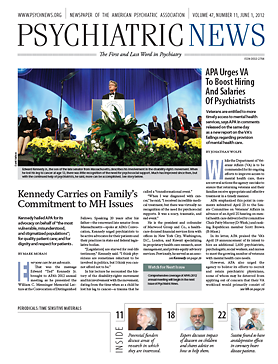It’s a classic case of which comes first, the chicken or the egg: Does stimulant use cause the brain changes known to be present in those with drug addiction, or do those brain abnormalities lead to drug addiction?
Brain abnormalities can be associated with the duration of stimulant abuse, suggesting that stimulant abuse is their cause, but researchers at the University of Cambridge in England have published new data suggesting that the brains of stimulant drug addicts may have been different to start with.
Karen Ersche, Ph.D., a senior research associate in the Department of Psychiatry at the University of Cambridge, and colleagues, compared brain structure and the ability to regulate behavior in 50 biological sibling pairs; within each pair, one sibling satisfied the DSM-IV criteria for dependence on stimulant drugs and the other had no history of chronic drug or alcohol abuse.
Using fractional inosotropy, the researchers assessed the density of white-matter fiber tracts, those axonal fibers that transmit neural signals between brain regions. They also assessed the participants’ degree of self-control by measuring their performance in a classic test of inhibitory control called the “stop signal reaction time.”
The surprising result was that the fiber-tract density and self-control deficits—compared with a control group—were as pronounced in stimulant-dependent individuals as in their nondependent siblings.
Nora Volkow, M.D., director of the National Institute on Drug Abuse (NIDA), and Ruben Baler, Ph.D., a neurobiologist and NIDA’s health science administrator, discussed the significance of the work in an editorial that accompanied the research report: “This finding is important for it suggests not only that dysfunctions in the frontostriatal circuits that handicap self-control—and are a hallmark of addiction— are influenced by genetics, but also that the increased vulnerability for substance use disorders engendered by these dysfunctions can be overcome.”
Ersche and her colleagues also compared the gray matter volume maps of healthy volunteers with those of the drug-dependent individuals and of their nondrug-abusing siblings and found that the brains of the sib-pairs showed distinct abnormalities compared with the healthy-control volunteers.
Specifically, key structures previously implicated in addiction, such as the medial temporal lobe and the basal ganglia, were significantly enlarged in the sib-pairs. They were also able to identify a significant reduction of gray matter volume in the posterior post-central gyrus and adjacent areas, such as the superior temporal gyrus and the posterior insula, in both drug-dependent individuals and their siblings. And the which-came-first nature of the changes was clearly apparent: “[G]ray matter regions associated with the duration of stimulant drug exposure differed clearly in location from the regions identified as markers of familial risk for stimulant drug dependence,” they found.
The researchers believe that their findings may indicate markers of neural vulnerability for pathological habit formation, which could further facilitate the effects of drugs of abuse by interfering with limbic-striatal functions, and they noted the possibility that “resilience factors that counteract the familial vulnerability to drug dependence” might explain the existence of the nonaddicted siblings.
Volkow and Baler took that thought one step further, saying the work of Ersche and colleagues has clinical implications, providing a potential biomarker that can be targeted for interventions to strengthen it. “[A] deeper, endophenotype-based understanding of personality traits that can promote resilience and their degree of malleability may help prevent adverse trajectories such as those leading to substance use disorder or other conditions with underlying deficits in self-control.”
This work was funded by the U.K. Medical Research Council.


